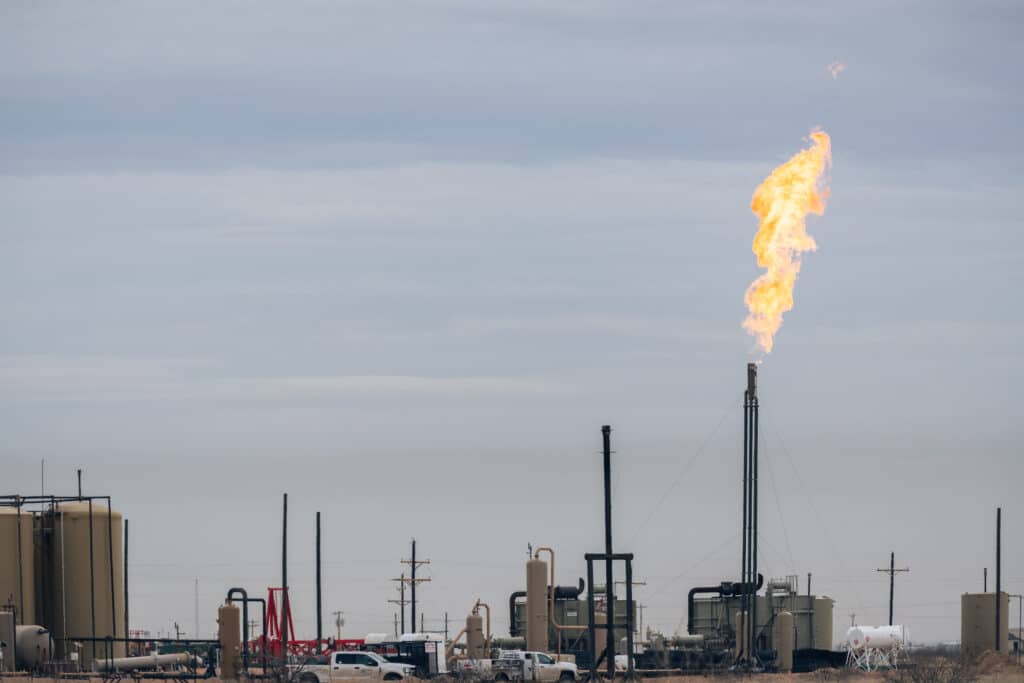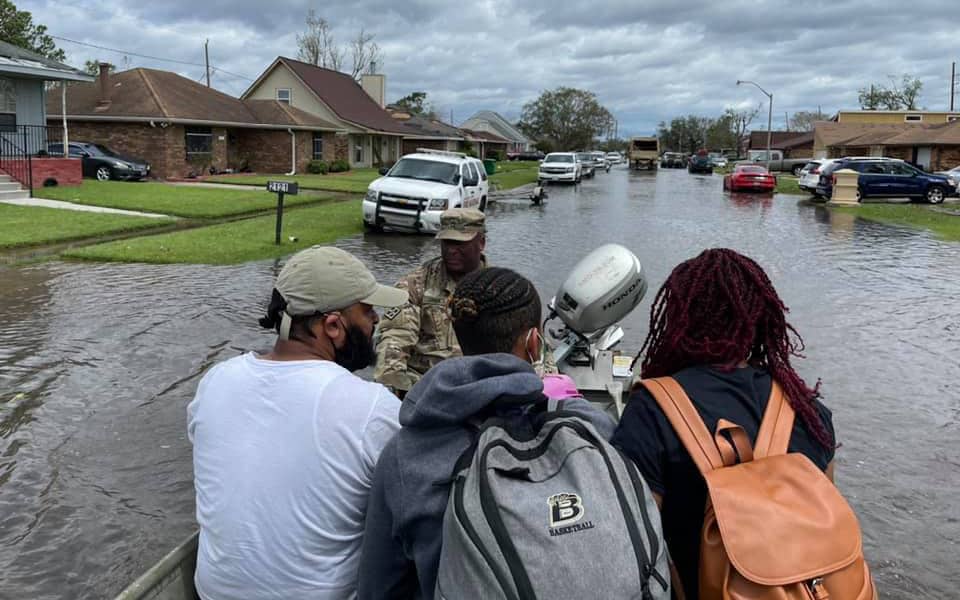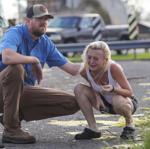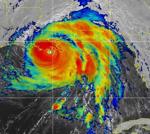The Guardian
California firefighters ‘stretched to limit’ as devastating blazes become the norm

Photograph: Noah Berger/AP
Before the ravenous Caldor fire laid siege to South Lake Tahoe, California’s top firefighting priority lay just to the north, where the Dixie fire scorched more land than any other single fire in state history. Together, the two behemoths have already blackened more than 1m acres (4,000 sq km) along the Sierra Nevada range. And fire season in the American west is just heating up.
The climate crisis has helped create extreme fire emergencies, with huge, rapid-moving blazes tearing through a hot, parched landscape at lightning speed. Fires have hopped granite summits firefighters had hoped would slow their spread. Blazes have displayed erratic burn behavior, making their movements hard to predict.
The extreme conditions raise fresh questions about the ability of the country’s firefighting forces to control an emergency that has grown exponentially bigger year after year.
Roughly 27,000 firefighters have been deployed across the west this summer, according to officials. Local crews have received support from federal agencies, firefighters from other states, soldiers and national guardsmen.
There is no official or expert estimate for how many firefighters are needed, but it is clear their numbers have fallen short. More than 8,200 first responders battled to stop California’s Dixie and Caldor fires. They were armed with dozens of helicopters, hundreds of dozers and a multitude of equipment. While there have been wins and important progress made, neither fire has been contained.
Once-in-a-career blazes become routine
For the first time in its history, California’s fire agency, Cal Fire, in the 2020-2021 fiscal year was on track to spend more than $3bn fighting wildfires, according to a report from the California legislative analyst’s office released last autumn.
Since 2012, fire suppression costs in the state have risen sharply each year. With more resources needed to battle the blazes, there have been fewer available for preventing them. Firefighters are seeing the effects of a system under pressure on the ground.
Over the last six years, the work of fire crews has changed drastically as the frequency, quantity, and size of the fires have gotten worse, according to Tony Martinez, a Cal Fire captain who has worked with the agency for 28 years.
Once-in-a-career blazes of years past had become the norm, Martinez said.
In the past months, fire crews have been repeatedly reassigned, moving from one fire to the next as new ignitions take place. Difficult decisions have had to be made. Protecting human life is always the top priority followed by saving structures, and sometimes that has meant ceding acreage in mountains and forests.

“Firefighting resources are scarce,” said Isaac Sanchez, a battalion chief of communications with Cal Fire. “But we still have a responsibility to attack the new fire or respond to the new 911 phone call.”
During last year’s record-breaking fire season, when more than 4.2m acres across California burned, Cal Fire reported that the scarcity of fire crews was one of the greatest challenges faced by incident commanders. “The lack of crews became a significant operational liability,” officials wrote in a siege report on the harrowing year. “The mutual aid system in California was stretched to its limits as fires burned up and down the state.
“The destruction of watersheds, communities, lives and livelihoods was profound,” the report continued. “In the short term, air quality across much of the state was abysmal. In some areas, the sun was blotted out by smoke, making mid-summer temperatures feel akin to the dead of winter.”
Related: ‘We do it together’: how a Lake Tahoe community prepared to flee the Caldor fire
Burns this year are outpacing last year’s devastating season. In addition to 15 large blazes in California, firefighters are battling 86 others across the US.
A strain on firefighters’ health
The state of California has increased funding and expanded its hiring in recent years. Cal Fire added close to 3,000 temporary firefighters to its ranks last year and in March this year the governor approved $80.74m to add 1,399 mostly seasonal firefighter positions using emergency fund authorization. The state’s budget this year also includes $1bn to be spent over several years for wildfire prevention.
In addition, local firefighting crews have been reinforced by teams from out of state, the national guard and other state and local agencies. But firefighters still feel strained.
Martinez thinks Cal Fire is still understaffed. “The result of that falls on the shoulders of the firefighters on the ground.”
Sanchez said he thought current crew levels in California could manage the firefight ahead, and that crews and officials had prepared for the scale of the challenge. “But there are times when no matter what you do, depending on the conditions out there, fires are going to establish themselves and grow into the disasters we see now,” he said.
He added: “If I had it my way, of course I would have 10 times as many resources as we do now. But these are the number of resources,” Sanchez said. “They are finite.”
Sanchez said that the fatigue and emotional struggles among fire crews were real. He said he felt the same way. “The overall strain on wellbeing and energy levels is cumulative,” Sanchez continued. “It adds up and is certainly affecting folks as we speak.”
Contributing to the crunch is the Covid crisis. A 16-member Cal Fire strike team fighting the Caldor Fire had to be sidelined for two weeks, after the virus started spreading through its ranks.
Staff shortages on the federal level, too, are adding strain. US Forest Service (USFS) records showed that only half of fire engines were fully staffed at the start of the season. Martinez said the federal shortage put further strain on resources within California agencies. “We were warned before fire season started that the Forest Service has major shortages and people are quitting at higher rates than us,” he said.

“They told us that we are going to have more of a commitment because of their lack of resources,” he added. “It compounds.”
Internal USFS documents, reported on by the Pew Charitable Trusts non-profit newsroom Stateline, noted that a third of agency engines were understaffed. Staff positions went unfilled as low pay and low morale pushed more federal firefighters into other lines of work, the news report concluded. “The agency sought to fill 781 vacant permanent positions in California during spring hiring this year, according to the data. But it ended the hiring period with 725 vacancies. That’s a net gain of just 56 employees,” Stateline reported in July.
“During years of extreme drought and prolonged fire activity across the country, resources are stretched to their limits,” Babete Anderson, national press officer for the USFS, told the Guardian in a statement. “The firefighter staffing shortage is mainly caused by limited candidate pools and competition with state and private fire organizations in California that pay two to three times the base pay of federal firefighters.” The federal government, she added, had recently taken steps to support wildland firefighters while improving recruitment and retention efforts.
The federal government has made moves to increase firefighter pay, a step advocacy groups have called a good start. Last month, the USFS announced pay increases were coming and that firefighters wouldn’t make less than $15 an hour from 30 June to 31 December this year. The infrastructure package passed by Congress earlier this year also included $600m to raise wages by 50% and shift 1,000 seasonal positions to permanent.
According to Grassroots Wildland Firefighters, an organization of active and retired federal wildland firefighters, those pay increases aren’t sufficient. The increases falls “woefully short”, said Kelly Martin, the organization’s president, given “the extreme risk and consequences that firefighters face on the fireline”.
“Recruitment is very difficult because of the low wages and people can’t find housing,” Martin said. “We are seeing shortages – they just cannot fully staff to what is needed in a year like this.”
Organizations like Grassroots point out that the government still doesn’t recognize many federal workers battling wildfires as emergency responders; instead, it considers them forestry technicians, range technicians, miscellaneous administrators and resource specialists. The classification can mean those workers miss out on services and resources. The part-time nature of their employment also affects retirement and other benefits.
“We are at a turning point in the climate change battle and the demands on federal wildland firefighters at the frontline have become a year-round request,” the group wrote on its website. “The federal government has failed to keep pace with this changing dynamic and firefighters are left with increased mental illnesses, increased rates of cardiovascular and respiratory diseases, and pay that falls below minimum wages in many parts of the country.”
While staff shortages have made fighting fires harder, Martin emphasized that real investment was needed on the prevention side. Extreme fires will continue outpacing efforts to fight them, if more isn’t done to cull the dense, dry vegetation that fuels them.
“What we really have to think about is how we embrace and manage fire,” she said. “We have a dual need. We have to protect life and property but we have another need to put more good fire on the landscape and that’s where we are really short with resources, both from a fiscal and human capital standpoint.”





































 Florida Gov. Ron DeSantis has hardened his resolve against mask and vaccine mandates even as his state’s ICUs fill up. Joe Raedle/Getty
Florida Gov. Ron DeSantis has hardened his resolve against mask and vaccine mandates even as his state’s ICUs fill up. Joe Raedle/Getty ICUs around the country, like this one in California, have been filling up. But one Florida health system saw a 700 percent increase in the number of patients not breathing and flatlining throughout its COVID-19 units from June until Aug. 20. Apu Gomes/Getty
ICUs around the country, like this one in California, have been filling up. But one Florida health system saw a 700 percent increase in the number of patients not breathing and flatlining throughout its COVID-19 units from June until Aug. 20. Apu Gomes/Getty